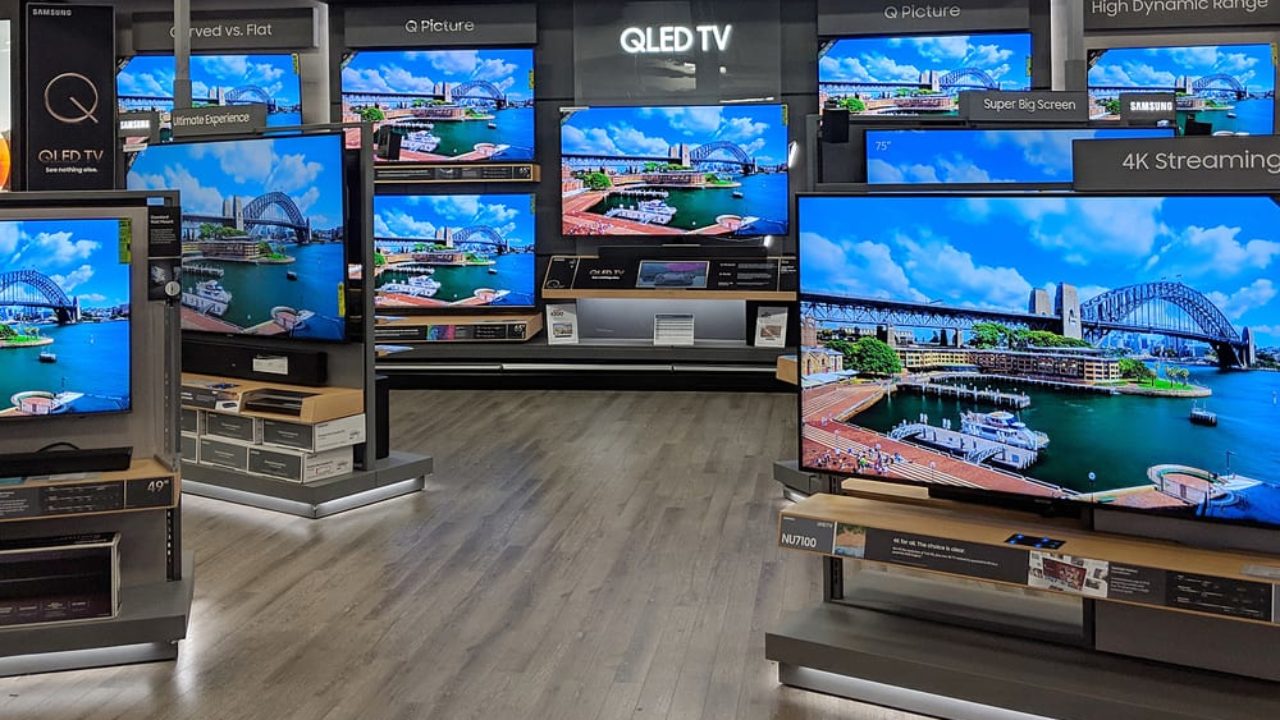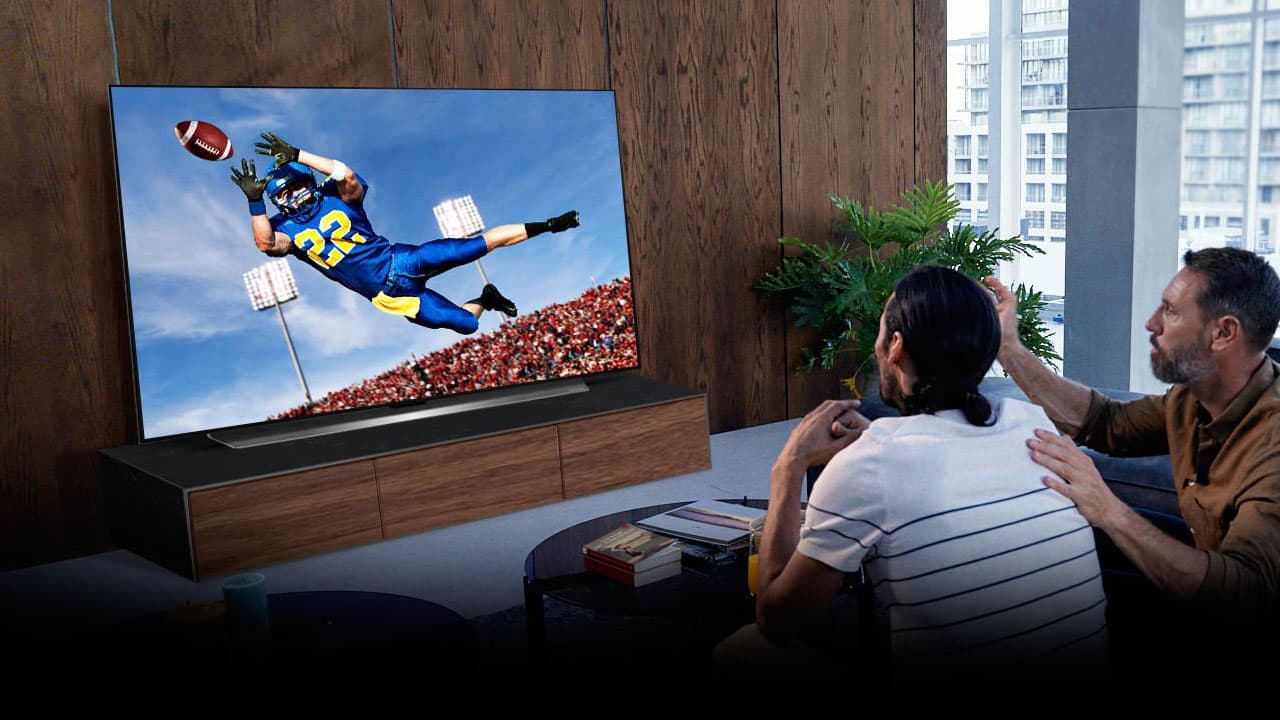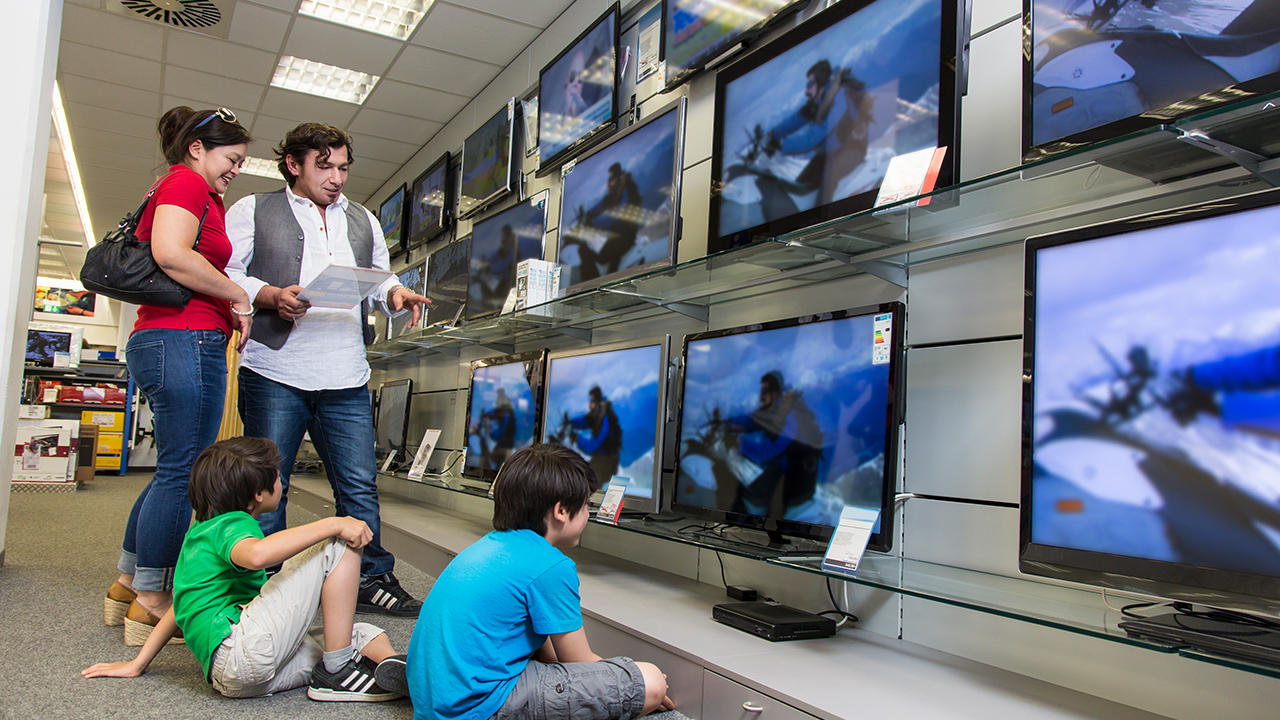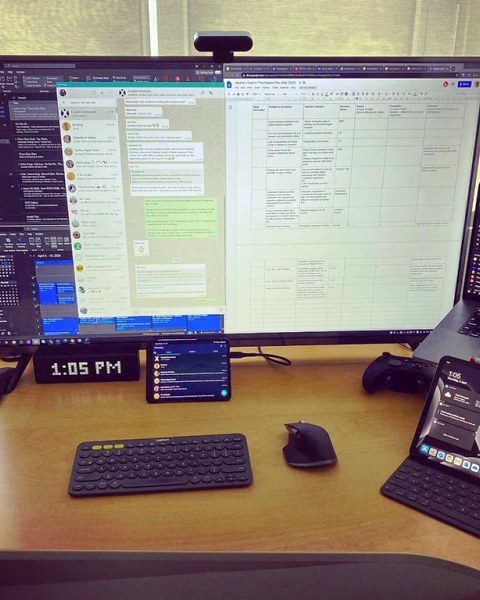These days, TVs have so many complicated features that it can be difficult to find the right one. Should you get an LED, QLED, or OLED TV? Is an 8K TV really worth it? What’s the difference between HDR10 and HDR10+? To make things simple, here’s a comprehensive guide that explains everything you need to know about buying a new TV, so you can make the best decision when shopping for a new flat screen.
What Size TV Should You Buy?
When it comes to TV size, bigger is almost always better. To calculate exactly how big your next 4K TV should be, just measure how far you sit from the screen and divide that number by 1.4. For example, if you sit 10 feet (or 120 inches) away, you should buy an 85-inch TV. This ensures that the screen will occupy enough of your field of view for an immersive experience.

Resolution: HD vs 4K vs 8K
One of the most important things to consider when buying a TV is its resolution. This refers to how many pixels (or points of light) a screen has. Basically, the higher the resolution, the more details you will be able to see.
These days, most TVs support Full HD (high-definition), 4K, and 8K resolutions. Full HD (also known as 1080p) TVs have over 2 million pixels, while 4K UHD (ultra-high-definition) TVs have over 8 million pixels, and 8K TVs have over 33 million pixels. To make it simple, a 4K TV has four times as many pixels as a Full HD TV, and an 8K TV has four times as many pixels as a 4K TV.
Full HD TVs have been the cheapest option for years, but 4K TVs are getting cheaper every year. On the other hand, 8K TVs are still very expensive, and there’s not a lot of 8K content you can even watch right now.
Panel Types: LED vs QLED vs OLED
There are really only two different types of displays on the market: LED and OLED. While LED TVs are cheaper, they don’t have the best image quality. On the other hand, OLED TVs have much better image quality, but they don’t get very bright.
The majority of flatscreen TVs these days use LED (light-emitting diode) backlights that shine through LCD (liquid crystal display) panels to create an image. These TVs are usually cheap and bright, but they don’t always deliver the best image quality. Because the panels aren’t good at blocking out all the light, LED TVs often make blacks look washed out. However, they also get very bright, so you can still see the image in a well-lit room with lots of windows.
OLED TVs are completely different from LED TVs because they don’t use a backlight. Instead, each pixel in an OLED TV can be turned on or off individually. This improves the contrast ratio because black pixels can be turned off completely, even if they are right next to bright white pixels.
The biggest downside to OLED TVs is that the individual pixels can degrade over time, leading to “permanent image retention.” This means static images and graphics can “burn in” your screen, especially if you leave your TV paused on the same image for a long time.
If you plan to watch TV in a bright room, you should buy an LED TV because they will get bright enough to combat natural light. On the other hand, if you plan to watch movies in a dark room, you should buy an OLED TV because they have better contrast and motion handling. If you do buy an LED TV, it’s important to know what type of backlighting it uses. There are “edge-lit” TVs that use a row of LEDs on the top, bottom, or side of the screen. There are also “direct-lit” TVs that use a grid of LEDs. However, both of these displays will cause light to “bleed” from the brightest parts of an image to the darker areas.
What Is HDR?
HDR (high dynamic range) adds details to the shadows and highlights of an image. That means you’ll get whiter whites, deeper blacks, and a wider range of colors compared to older displays with Standard Dynamic Range (SDR). However, in order to take advantage of HDR content, you need a TV with a peak brightness of at least 500-1,000 “nits” or more.
HDR10 vs HDR10+ vs Dolby Vision
The three main HDR standards are HDR10, HDR10+, and Dolby Vision. HDR10 is the most popular standard, but it can make an entire movie look brighter or darker than it should be. On the other hand, HDR10+ and Dolby Vision can get brighter, support more colors, and produce the most natural image. In order to take advantage of an HDR TV, you also need to be watching HDR content. Currently, HDR10 and Dolby Vision are supported by lots of streaming services and Blu-ray players, but HDR10+ is not commonly used.
Sound Quality: HDMI ARC vs eARC
Most TVs these days are too thin to contain high-quality speakers. To get the best sound from a TV, you will need to connect it to a soundbar or surround-sound system via HDMI ARC (audio return channel) or eARC (enhanced audio return channel) port. With HDMI ARC, you can connect your TV directly to a soundbar or AV receiver using a single cable. The only real difference is that eARC supports higher-quality audio formats like DTS:X and Dolby Atmos. These surround-sound technologies allow you to create a 3D sound that comes from all around you, as long as you have the right audio system.

What Is Refresh Rate: 60Hz vs 120Hz vs 240Hz
A TV’s refresh rate refers to how many images a screen can display per second. Generally speaking, a high refresh rate will result in smoother motion, especially when watching sports or playing games on current-gen consoles, like the Xbox Series X and the PlayStation 5. These days, you should only buy a TV if it has a refresh rate of 120Hz, especially if you want to play video games. But a higher refresh rate will also help with older movies, action movies, sports, and anything with lots of motion.
Choosing a TV for Gaming
If you are buying a TV for gaming, you want to find one with a low input lag (also known as latency). This is how much time it takes for the screen to respond after you push a button on your controller. Preferably, you want a TV with an input lag under 30ms (milliseconds).
Ports and Connectivity
When buying a TV, you also need to make sure that it has the right ports. Specifically, you want a TV with several HDMI 2.0 or HDMI 2.1 ports. These high-speed connections support higher resolutions and faster refresh rates from your other devices. At the moment, HDMI 2.0 is the most common HDMI standard. But if you have the latest-gen gaming console, you should buy a TV that has at least one HDMI 2.1 port. It is also important to note that you will need a high-speed cable in order to take advantage of your HDMI 2.1 ports.
If you have a smart TV, you also want to buy a TV with an Ethernet port. This will allow you to connect your TV directly to your router to get the most reliable signal.
Did you find this information useful? Let us know in the comments below!


